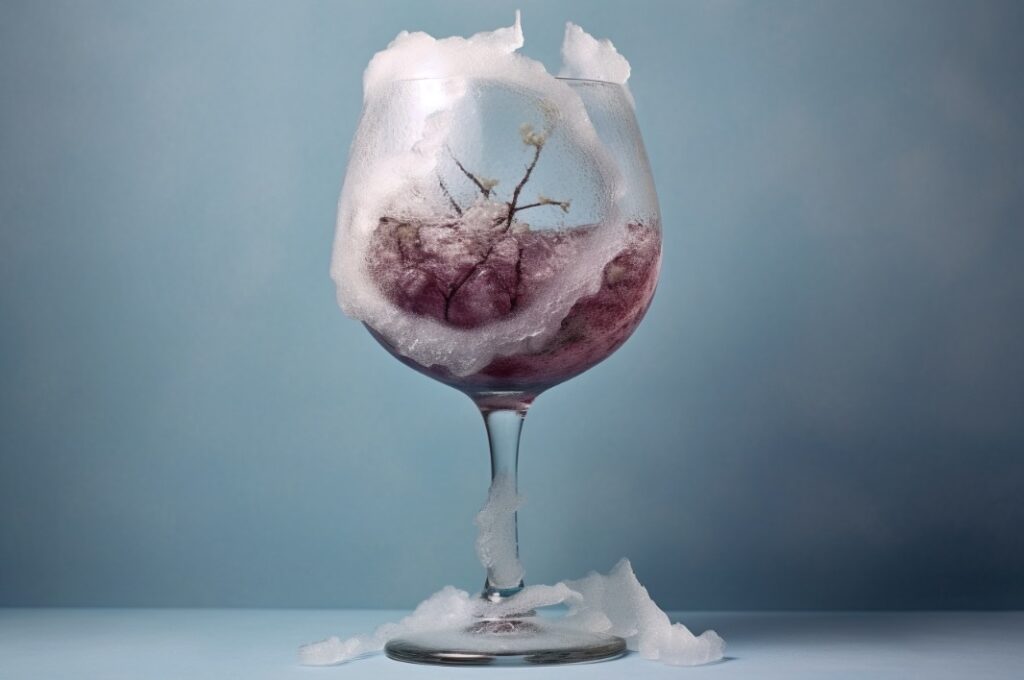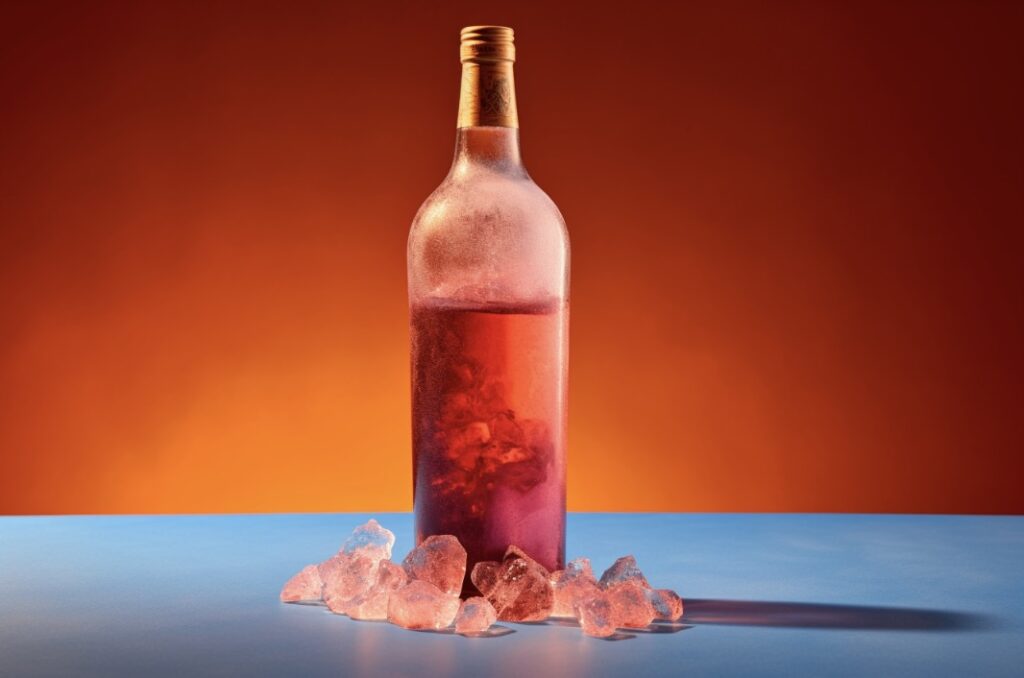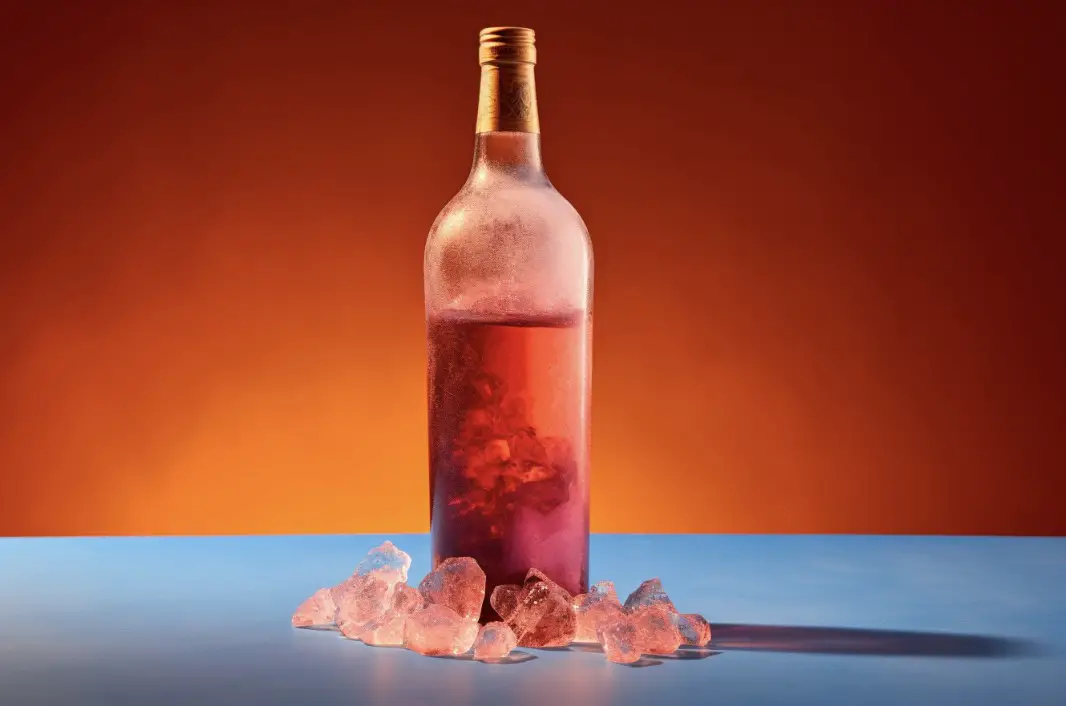As an experienced brewer, I often get asked if cold crashing wine is necessary during the fermentation process. The short answer is that while it’s not strictly necessary, it can be a useful step in producing a higher quality product.
I have personally seen improvements in my wine after cold crashing, but it’s important to understand what this process entails and how it can affect the final product.
In this blog post, I will discuss the details of cold crashing wine, its benefits and drawbacks, and ultimately help you decide if it’s the right step for your winemaking journey.
What is Cold Crashing?
Cold crashing is the process of rapidly cooling your wine during fermentation, typically by placing it in a refrigerator or using a glycol chiller.

This sudden drop in temperature causes any suspended particles, such as yeast, proteins, and tannins, to precipitate out of the wine and settle to the bottom of the fermenter.
The result is a clearer, more stable wine with less sediment and a reduced chance of spoilage.
How Does Cold Crashing Work?
The science behind cold crashing is relatively simple. As the temperature drops, the solubility of certain compounds in the wine decreases, causing them to aggregate and form larger particles. These particles are then more easily removed from the wine through either racking or filtration, resulting in a cleaner, brighter product.
Benefits of Cold Crashing Wine
There are several benefits to cold crashing your wine, including:
1. Improved clarity: Cold crashing helps to remove suspended particles, leaving your wine crystal clear and visually appealing.
2. Enhanced flavor and aroma: By removing excess yeast and other compounds, cold crashing can help to bring out the true flavors and aromas of your wine.
3. Reduced sediment: Less sediment in your wine means less chance of off-flavors developing and a smoother mouthfeel.
4. Increased stability: Cold crashing can help prevent spoilage and oxidation, resulting in a longer shelf life for your wine.

Drawbacks and Considerations
While there are many benefits to cold crashing, there are also some potential drawbacks and considerations:
1. Extended fermentation time: Cold crashing can slow down or even stall fermentation, requiring additional time for the process to complete.
2. Risk of oxidation: If not done carefully, cold crashing can introduce oxygen into your wine, leading to oxidation and spoilage.
3. Temperature control: Maintaining a consistent temperature during cold crashing is essential to avoid temperature fluctuations that can negatively affect your wine.
What does cold crashing wine do?
Cold crashing wine is a technique commonly used in winemaking to clarify and stabilize the wine before bottling. It involves cooling the wine to near-freezing temperatures for a specific period of time, typically around 24 to 48 hours.
The primary purpose of cold crashing is to encourage the precipitation and settling of unwanted particles and sediment in the wine. When the wine is chilled, the lower temperature causes certain substances, such as proteins, tannins, and tartrates, to become insoluble and form visible solids. These solids then gradually sink to the bottom of the container, making it easier to separate them from the clarified wine.
By cold crashing, winemakers can achieve a clearer and more visually appealing wine, as well as reduce the risk of sediment forming in the bottle over time. It can also help stabilize the wine by removing potential haze-causing compounds, minimizing the need for additional fining agents or filtration.
It is important to note that cold crashing is typically performed after fermentation and any necessary aging, as it may halt or slow down certain processes. Additionally, the duration and temperature of cold crashing can vary depending on the specific wine and desired outcomes, so it is essential for winemakers to carefully monitor the process to avoid any negative effects on the wine’s flavor or aroma.
Should I cold crash my wine?
As an expert brewer, I must clarify that cold crashing is a technique primarily used in beer brewing rather than wine production. Cold crashing involves rapidly lowering the temperature of beer to near-freezing temperatures for a short period, typically 24-48 hours, to encourage the settling of suspended particles and yeast.

In the context of wine, cold crashing is not a common practice and may not be necessary or beneficial. Unlike beer, wine naturally undergoes a longer fermentation process, allowing ample time for sediment and yeast to settle on their own. Additionally, wine is typically aged for an extended period, during which sediment naturally forms at the bottom of the vessel.
However, there may be specific circumstances where cold crashing could be considered for certain wine styles or situations. For example, if you have a cloudy or hazy wine that has not clarified adequately during fermentation or aging, cold crashing might help to encourage sedimentation. It could also be useful if you need to stabilize the wine quickly before bottling, although there are alternative methods for achieving this.
It is important to note that cold crashing wine can potentially affect its flavor and aroma profile. The cold temperature may inhibit the development of certain desirable characteristics or impact the wine’s overall balance. Therefore, it is advisable to consult with a winemaking expert or enologist before deciding to cold crash your wine, as they can provide guidance based on your specific circumstances and goals.
When to Cold Crash Your Wine
The ideal time to cold crash your wine is after the primary fermentation has been completed and before the secondary fermentation or aging process begins. This is typically around 1-2 weeks after the initial fermentation started, depending on the specific wine you are producing.
In general, it is recommended to wait until fermentation is fully complete before initiating cold crashing. This typically occurs when the gravity readings have stabilized over a few consecutive days, indicating that the yeast has consumed all fermentable sugars.
This can take anywhere from a few days to several weeks, depending on the specific wine and yeast used.
Starting cold crashing too early, while fermentation is still active, can have negative effects. The sudden drop in temperature may cause the yeast to become dormant, resulting in incomplete fermentation and potential off-flavors. Additionally, prematurely crashing the wine can trap unwanted compounds and yeast in suspension, making it more difficult to achieve the desired clarity.
Alternatives to Cold Crashing
If you decide that cold crashing isn’t the right choice for you, there are other methods you can use to clear your wine with:
1. Finings: Adding fining agents, such as bentonite or isinglass, can help to remove suspended particles and improve clarity.
2. Filtering: Using a wine filter can help to remove sediment and other impurities, resulting in a clearer product.
3. Extended aging: Allowing your wine to age for an extended period can help to naturally clarify and stabilize it.
My Personal Experience with Cold Crashing
In my years of winemaking, I have found that cold crashing can be an effective tool in producing a high-quality wine. I have seen improvements in clarity, flavor, and overall stability, making it a worthwhile step for me.

However, I also recognize that every winemaker’s process and goals are unique, and what works for me may not be the best choice for others.
Conclusion: Is Cold Crashing Wine Necessary?
In conclusion, while cold crashing wine is not strictly necessary, it can be a beneficial step in the winemaking process. Here are some key takeaways to consider:
1. Cold crashing can improve clarity, flavor, and stability in wine.
2. The process involves rapidly cooling the wine to force suspended particles to settle out.
3. Cold crashing is ideally done after primary fermentation and before aging.
4. There are some potential drawbacks, such as extended fermentation time and risk of oxidation.
5. Alternatives to cold crashing include using finings, filtering, and extended aging.
6. Every winemaker’s process and goals are unique, and cold crashing may not be the best choice for everyone.
Ultimately, it’s up to each individual winemaker to decide if cold crashing is a necessary step in their process.
By weighing the benefits and drawbacks, and considering their specific goals and preferences, each winemaker can make an informed decision about whether or not to cold crash their wine.
FAQs
Can cold crashing stop fermentation?
A cold crash is a technique used in brewing to halt fermentation and clarify the beer. It involves rapidly lowering the temperature of the beer to near freezing temperatures, typically around 32°F (0°C), for a period of time ranging from a few days to a week.
By exposing the beer to cold temperatures, the yeast activity slows down significantly, effectively stopping fermentation. This is beneficial for a couple of reasons. First, it helps to prevent off-flavors that can be produced during prolonged fermentation, such as excessive esters or fusel alcohols. Second, it promotes the settling of yeast and other particulates, resulting in a clearer and more visually appealing beer.
During the cold crash, the yeast and other solids in suspension will gradually drop to the bottom of the fermentation vessel due to reduced buoyancy. This process is known as flocculation. After the cold crash, the clarified beer can be carefully transferred to another vessel, leaving behind the sediment, or it can be bottled directly.
It’s important to note that a cold crash alone does not completely halt fermentation. Some yeast activity may still occur at very low temperatures, albeit at an extremely slow pace. To completely stop fermentation, brewers often rely on additional methods such as filtration, pasteurization, or chemical stabilization.
What temperature is cold crashing wine?
Cold crashing wine typically involves lowering the temperature of the wine to around 32°F to 40°F (0°C to 4°C). This process is commonly done before bottling to help clarify the wine by encouraging the precipitation of solids, such as yeast and other particles, which settle at the bottom of the container. Cold crashing can also help stabilize the wine and improve its clarity and flavor.




